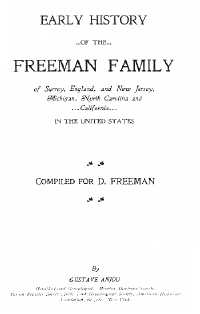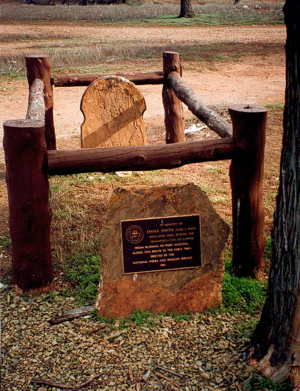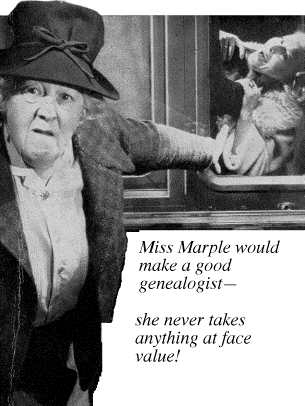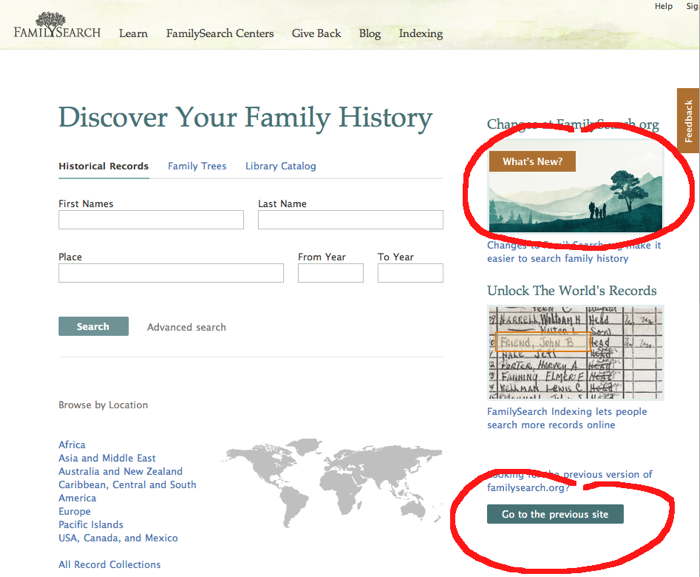You
are receiving this because your address is subscribed at: www.jaunay.com/newsletter.html |
|
 |
| No: 61 |
March 2011
|
|
News March Seminars 2: Introduction to FH research (over 7 weeks with sessions of 1.5 hrs each), WEA Centre Adelaide, 8:00 to 9:30pm 5: Family History on the Web, WEA Centre Adelaide, 10:00am to 1:00pm 11: Identifying and dating 19th century photos, WEA Centre Adelaide, 7:00 to 10:00pm 27: Coming to grips with FamilySearch, WEA Centre Adelaide, 10:00am to 1:00pm April Seminars None programmed at this time. See the seminar program for more details and bookings. NAA Adelaide Office The NAA Adelaide Office Reading Room at Angas Street will close on 9 March 2011 and reopen at the State Records Adelaide Reading Room in Leigh Street on 1 April. Persons requiring access to NAA material during this period will have to make arrangements with the NAA prior to 9 March. The new Adelaide office will be staffed by an Assistant Director supported by three Archives officers. When full co-location is achieved, the Archives Darwin Director, Phyllis Williams, will take responsibility for the Adelaide Office. The opening date for the Collinswood Reading Room is unknown at this stage and until that happens records will have to be brought into Leigh Street for users. Just how long this will take is also unknown at this stage and it may be appropriate to call the new office when planning a visit. Australian Heritage Week The Commonwealth Government has declared 14 to 20 April as Australian Heritage Week. As part of the celebrations, Graham Jaunay will be leading a heritage walk around Semaphore entitled. Esplanade and shops, on behalf of The Friends of SA Archives. If you are interested in joining in this walk, additional details will be available by sending an email to Adelaide Proformat. History Month In past years HistorySA has sponsored a week on activities at the end of May designated History Week. The week embraces all of May this year as part of the 175 anniversary of European settlement. Graham Jaunay on behalf of the WEA is operating a number of seminars and walks. Details in the next newsletter or on the WEA website. |
In
this issue: |
|
Graham Jaunay Services
|
| Sanctity
of the published word Many mistakenly think that, just because the material is presented in a published form, it must always be correct. In the context of this article published means any form of distribution, be it in books, fiche, CDs or on the web. It has been established that some have even knowingly published false material. Such charlatans were rife in the mid to late nineteenth century. The scam worked like this—a fraudster would locate a wealthy individual and approach that person with information to the effect that while doing some research they discovered their victim was related to someone in recent history who was quite important socially—a member of the lesser royals or any noble family or perhaps someone quite famous like Wellington, Nelson, Darwin or such like. For just a few pounds the crook could provide a chart or forged documents  demonstrating
the link. Now even up to the stage when the victim purchased the material,
no significant harm had been done to any, but the gullible purchaser.
The problem arises when that person decides to disseminate the new
information, that is they decide to publish! Now publishing can be
a simple as submitting the material to a publication like Debrett's
Peerage, a regular, highly esteemed directory of the upper crust
in society outlining their family history. Highly esteemed by the
upper crust but treated with great suspicion by any able family historian!
Some even went as far as to have a book produced. Compilers of family
histories who borrow from previously published genealogies without
verifying their documentation help to perpetuate false information.
You can visit page after page on the Internet seeing this wholesale
copying with little or no regard for correctness. demonstrating
the link. Now even up to the stage when the victim purchased the material,
no significant harm had been done to any, but the gullible purchaser.
The problem arises when that person decides to disseminate the new
information, that is they decide to publish! Now publishing can be
a simple as submitting the material to a publication like Debrett's
Peerage, a regular, highly esteemed directory of the upper crust
in society outlining their family history. Highly esteemed by the
upper crust but treated with great suspicion by any able family historian!
Some even went as far as to have a book produced. Compilers of family
histories who borrow from previously published genealogies without
verifying their documentation help to perpetuate false information.
You can visit page after page on the Internet seeing this wholesale
copying with little or no regard for correctness.In a class of his own has to be Gustaf Ludvig Ljungberg who operated under the alias of Gustave Anjou (1863–1942) who forged genealogical records for his unsuspecting customers. His main targets were New England families desirous of being more important than they were and had too much spare money (up to USD9000). Many publications contain this material tainting the lineages of over 2000 common American surnames. It is thought that many books resided in prominent respectable family history libraries including Salt Lake City waiting to ambush unwary researchers! Over 300 such books are listed at Fraudulent Lineages. Anjou is not alone, fraud ranges from a simple tweaking of a family chart prior to publication through to people like William Horn of Kansas who managed to con newspapers in the 1930s to publishing his false material about people including fake diaries, court records and old maps.They were notable for their great level of detail, especially concerning the lives of the common people. Because the material appeared to supply information about famous historical figures and to fill gaps in existing historical knowledge, they were received enthusiastically. Have you ever received a letter in the mail from a company who claims to have done extensive work around the world on the history of your surname? Perhaps they have produced a wonderful book with a title like, The World book of Jaunays, that purports to trace the history of the surname back in time. These family surname history books are little more than glorified telephone books, but the people listed often have no relationship to one another. Companies such as Halberts of Bath have been prosecuted and shut down for just such fraud. More importantly, there is a chance that such material may be taken up by unsuspecting readers and disseminated as their family. Similar items to watch out for include family history and surname origin scrolls and plaques. These provide only a generic history or surname origin of some of the families that carry the surname in question, but nothing on any specific family. Basically, any company who suggests that a mass-produced item is part of a customer's individual family history is misrepresenting genealogy.  A headstone could be considered a publication! Just east of Brachina
Gorge in South Australia’s north is the isolated grave of infant
Emma Smith who died early in the state’s colonial history. What
a strange place to bury an infant! Well away from any settlement or
road. Her parents were presumed to be carting copper to Port Augusta
by bullock wagon according to the National Parks monument placed on
her grave which still bears the original headstone. Unfortunately
the weathering has removed every scrap of text from it. Research reveals
that Emma is more likely to be the daughter of the storekeeper at
Youncoona, James Smith, whose store/eating house was located about
600m from the grave site. No trace of the store remains nor is there
much evidence left that grave was on the main road south to Port Augusta
from Blinman. Almost everyone that visits this remote site goes away
without the thought that the plaque may be wrong.
A headstone could be considered a publication! Just east of Brachina
Gorge in South Australia’s north is the isolated grave of infant
Emma Smith who died early in the state’s colonial history. What
a strange place to bury an infant! Well away from any settlement or
road. Her parents were presumed to be carting copper to Port Augusta
by bullock wagon according to the National Parks monument placed on
her grave which still bears the original headstone. Unfortunately
the weathering has removed every scrap of text from it. Research reveals
that Emma is more likely to be the daughter of the storekeeper at
Youncoona, James Smith, whose store/eating house was located about
600m from the grave site. No trace of the store remains nor is there
much evidence left that grave was on the main road south to Port Augusta
from Blinman. Almost everyone that visits this remote site goes away
without the thought that the plaque may be wrong.Others have published the material from their very early researching, only to later find that it was not quite correct. A person once submitted some material on the Jaunay family to the LDS website, FamilySearch. He later discovered more information and resubmitted new material and to his dismay discovered the old version was also retained giving the impression of two people sharing the name with distinctly differing origins! To this day, some forty years later the family have tried to correct that mistake, but to no avail.  The
Jaunay entry in the LDS Ancestral file at familysearch.org The
Jaunay entry in the LDS Ancestral file at familysearch.orgResearchers can make significant mistakes when they do not take the time to search for original documents, but merely take a previous researcher’s work as correct. Unfortunately the great bulk of readily available material is compiled and therefore should only be used as a guide to research. It must be confirmed by seeking out the primary sources. This stance is not putting down the good work done by many diligent people who tried their best given that they had to abstract and transcribe from original documents while on a research trip. A thorough researcher will always attempt to verify material and any researcher worth their salt always confirms findings in any secondary source with reference to the primary source. To be absolutely certain, a researcher really needs to locate two independent sources as, of course, primary sources can also be at error. This becomes especially important as your work goes back in time and you eventually find your work centred on a small village populated by numerous people all sporting the same names! Thus if you find a baptism date via the IGI you need check the entry by referring to the film of the original baptism register which can be processed for you at your local LDS centre. An independent source that collaborates this entry may be a record in a family diary or a baptism certificate issued by the parish priest. Of course often you will count yourself lucky to find just one reference to the event! 
Just as a published fact can be wrong, an omission in the record does not mean that the event did not occur! An omission may merely be just that, but on the other hand perhaps the record is held by another jurisdiction. A search of the published civil registration indexes that fails to find a person is not an indication that the event did not occur, rather that the event was not registered. For example it is well known that many South Australian children born to Catholics, the Irish or the Scottish were not registered prior to 1875 but often their baptism can be located. Many remote deaths were never registered, but can be found in other records such as police journals, interstate estate records and inquest files. Some events occurring near colonial and state border get reported in the adjacent state/colony. So if you have a tendency to copy anything out of a book or from the Internet then beware. Even if the item cites primary source, it should not be used as a reference. Rather you need to then progress to that primary resource. In all cases the secondary material you locate should be used as a stepping off point to find an ancestor. Even if the work you use contains reference, it may not be correct. There are mistakes in many published papers, books and websites. How many times do you repeat what your grandparent told you as fact? Can you prove it? Stories are wonderful and an essential part of any family history, but remember they are only stories until backed up with evidence. Repeat them by all means but make sure they are clearly indicated to be stories or myths. FamilySearch website In early December 2010, the FamilySearch website pilot site took over from the long standing old format. The change does not just relate to a new format but also to a significant amount of newly digitised data. This free site remains one of the most significant for Australian researchers seeking their British and European ancestry. At the time of writing this newsletter a significant number of features have not been transferred over and so it is appropriate to continue to visit the old site and that can be done by clicking on the button at the bottom right of the page. Significant features yet to be transferred include, the so-called 1881 British Census that is in fact the English Census and the Pedigree Resource File  In the meantime it would be appropriate to download the 24 page document outlining the new version. Just click on the image at top right of the new home page. This document will outline how to navigate the new site to find the old features that have been transferred. It also details the changes and, sadly, outlines some of the previously useful features that have been discontinued. The future of Hugh Wallis' excellent supporting website is very much up in the air. His site is of course useful in determining which parish records in Britain have been filmed and for what periods. It is the appropriate gateway into the FamilySearch site when the visitor knew the precise location of the ancestors. |
|
| To
unsubscribe send a blank email via the following link using the same
address you subscribed to: newsletter-leave@jaunay.com |